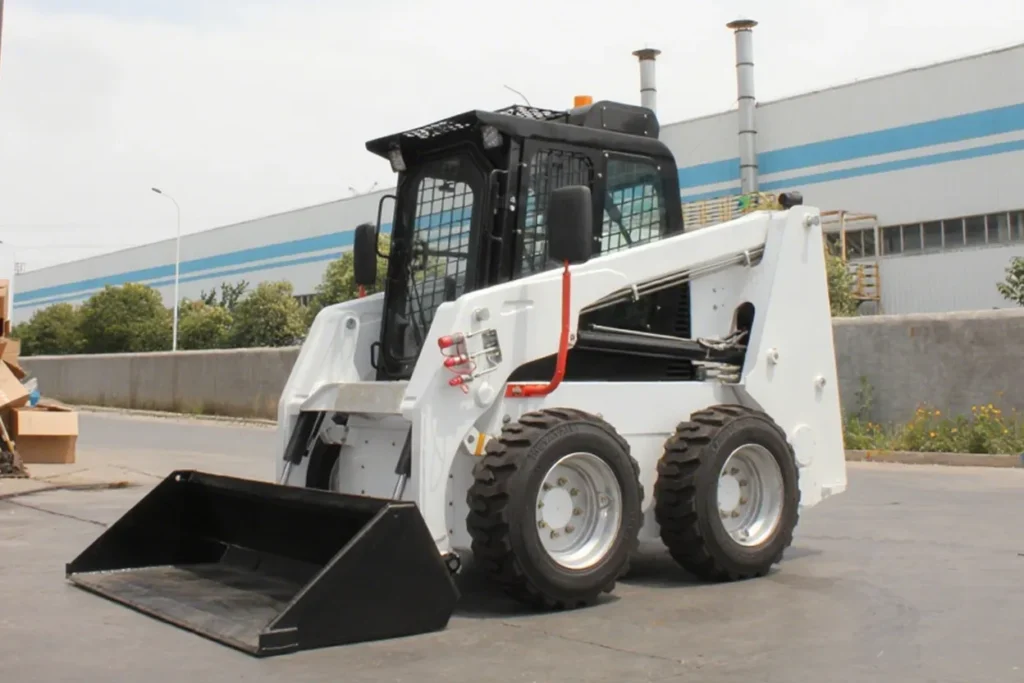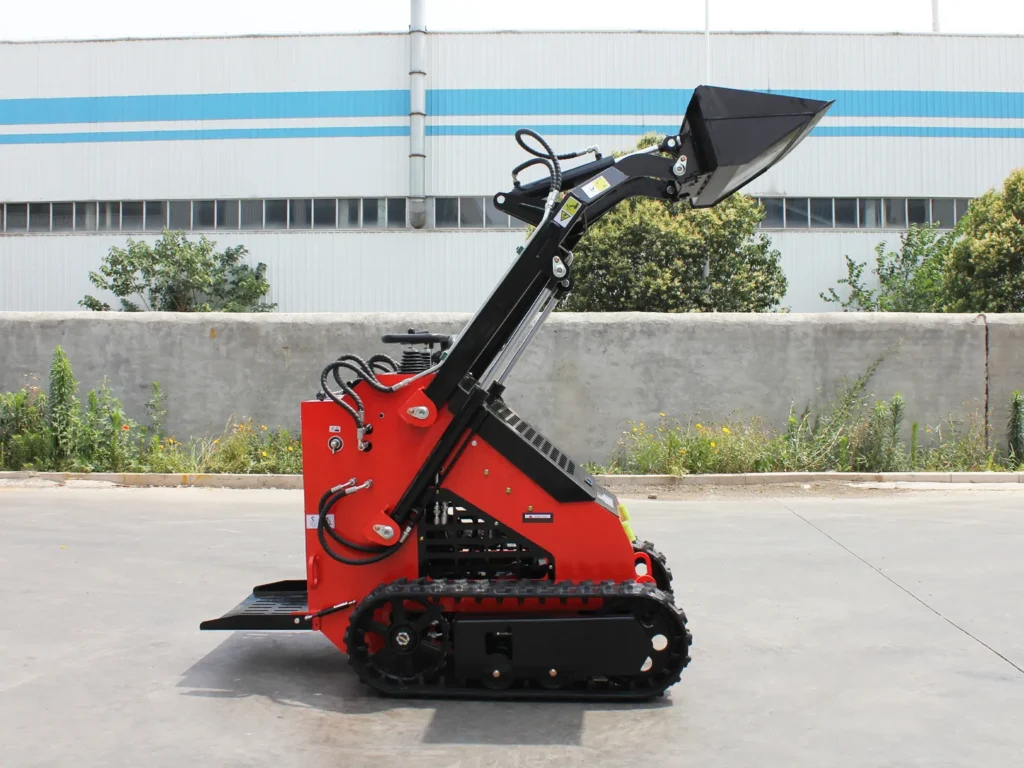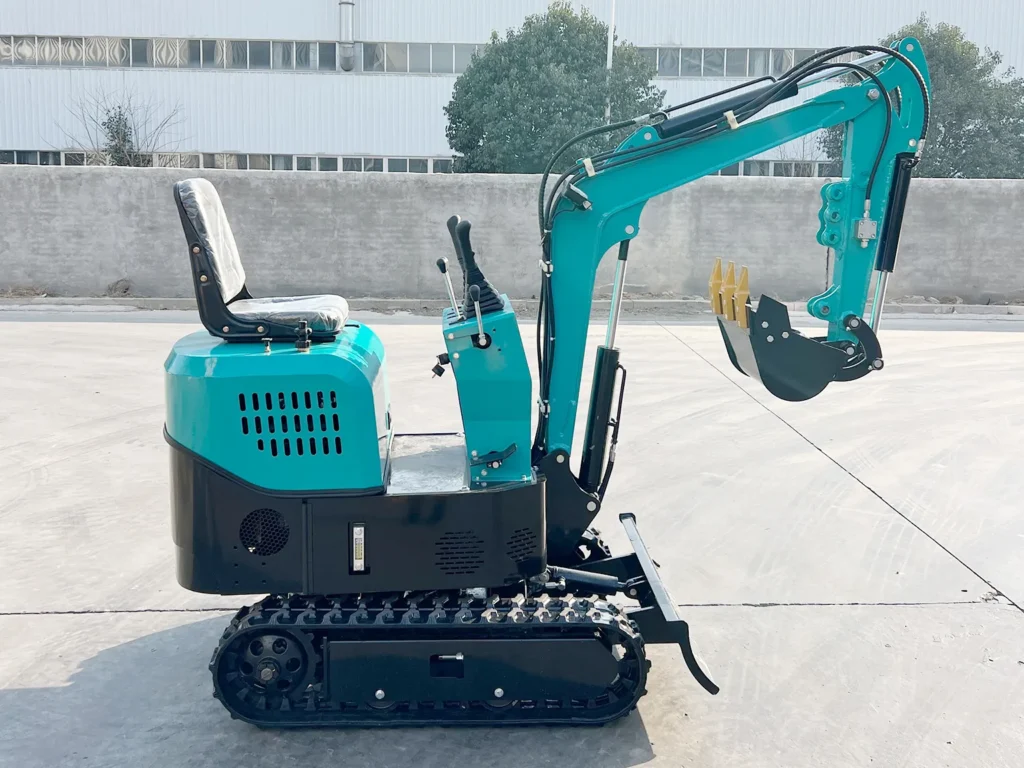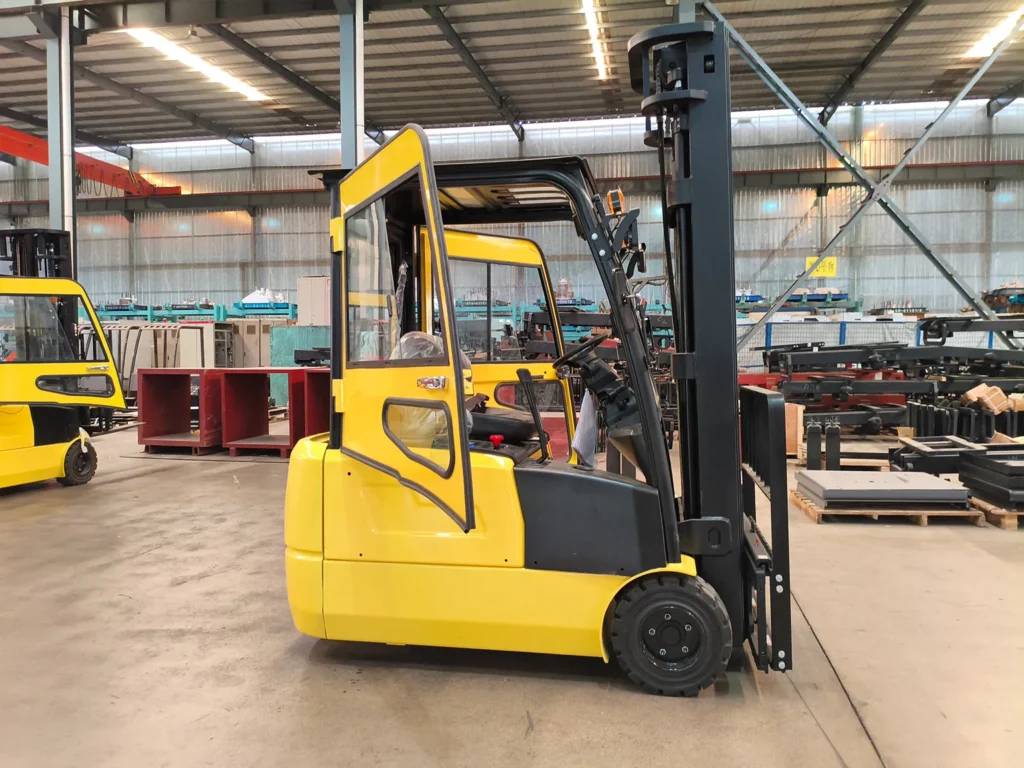You need a machine that chews through dirt, snow, or debris without backing down. But with three compact loader types shouting for your attention, how do you pick your jobsite champion? Forget the hype. We’ll break down skid steers, compact track loaders (CTLs), and compact wheel loaders in plain language—no sales fluff, just real-world truths.
Here is Canary been working in the construction machinery industry for 10 years. Now, I will share with you the Skid Steer vs Compact Wheel Loader vs Compact Track Loader.
⚙️ Meet the Contenders: What Makes Each Unique
Skid Steer Loaders: The Ultimate Space Savers
Imagine turning inside a single-car garage. That’s the skid steer’s superpower. It spins by dragging wheels sideways—like a tank—letting it pivot within its own length.
- Tight Squeezes: At under 1.8 meters wide (about the length of a sofa), it slips through barn doors, urban alleys, or crowded warehouses.
- Surprising Strength: Don’t let size fool you. It lifts 200–500 kg—that’s 4–10 full-grown deer!—and runs 40+ attachments in minutes. Swap from a bucket to an auger faster than you can drink your coffee.
- Where It Rules: Paved lots, hard-packed soil, indoor spaces (e.g., scraping warehouse floors or stacking pallets).
- Downsides: Bumpy ride on rough ground. Tires tear up soft grass or mud.
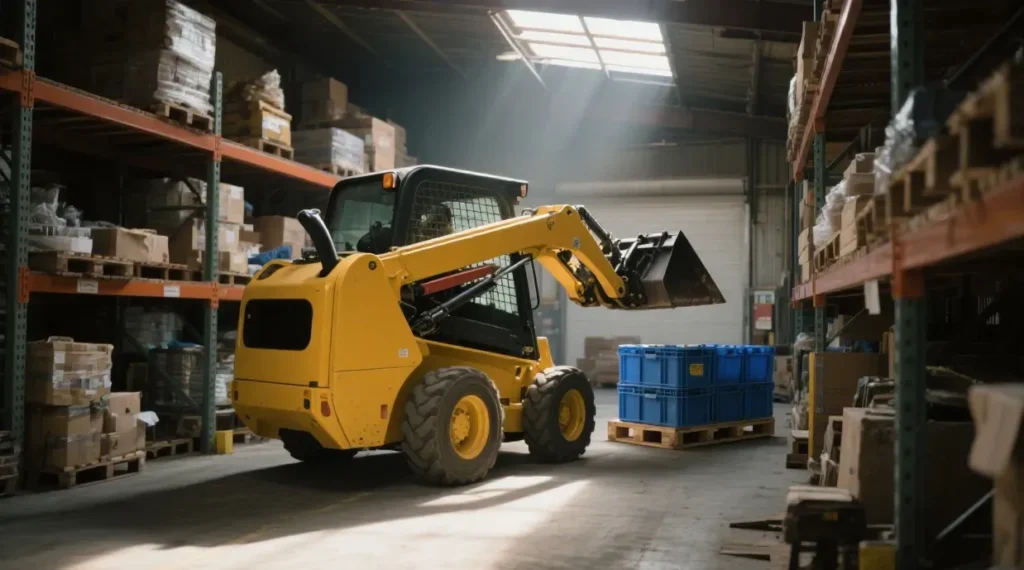
Compact Track Loaders (CTLs): Masters of Messy Terrain
Working in mud soup or knee-deep snow? CTLs trade wheels for rubber tracks. Think of them as “industrial snowshoes”—they spread the machine’s weight so it won’t sink.
- Gentle Giant: Presses on the ground with just 3–5 PSI—less than a child’s footprint! Protects lawns, golf courses, or fresh sod.
- Unshakeable Grip: Tracks bite into slopes, mud, or sand. Low center of gravity keeps it stable on hills.
- Workhorse Pace: Slow (under 6 km/h, walking speed) but unstoppable in swamps, demolition sites, or snowy driveways.
- Trade-offs: Costs more upfront. Tracks need regular tension checks.
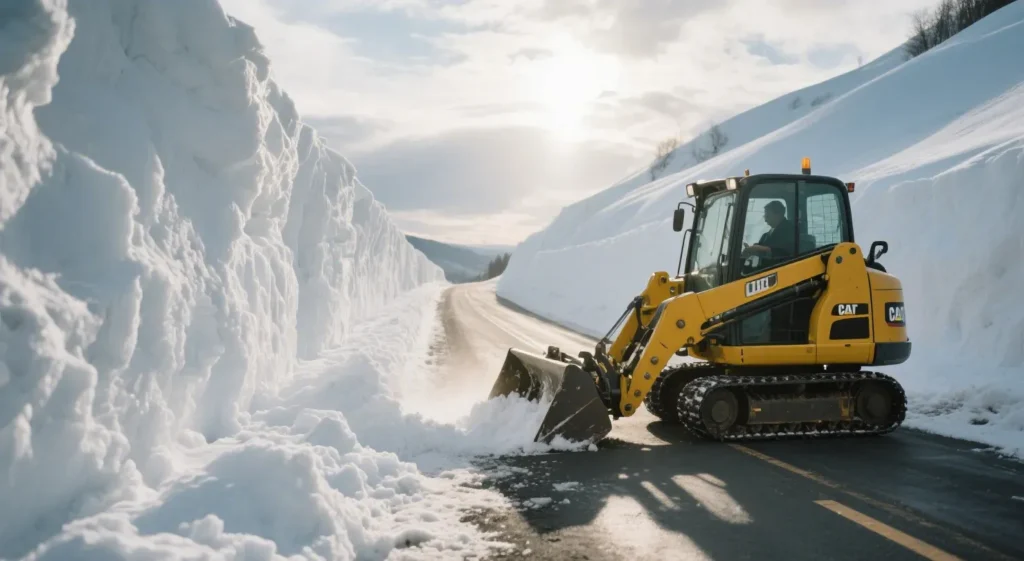
Compact Wheel Loaders: The Distance Kings
Hauling gravel across a 10-acre farm? The compact wheel loader is built for it. It’s like a skid steer’s athletic sibling—pivot steering, higher speeds, and smoother rides.
- Speed Demon: Hits 12–18 km/h—that’s 3x faster than walking! Covers long distances quickly.
- Heavy Lifter: Carries 750+ kg (like a small car engine) and lifts higher to dump into trucks.
- راحة المشغل: Suspension absorbs bumps. Better visibility from a higher seat.
- Limitations: Wider turning radius. Struggles in deep mud or sand.
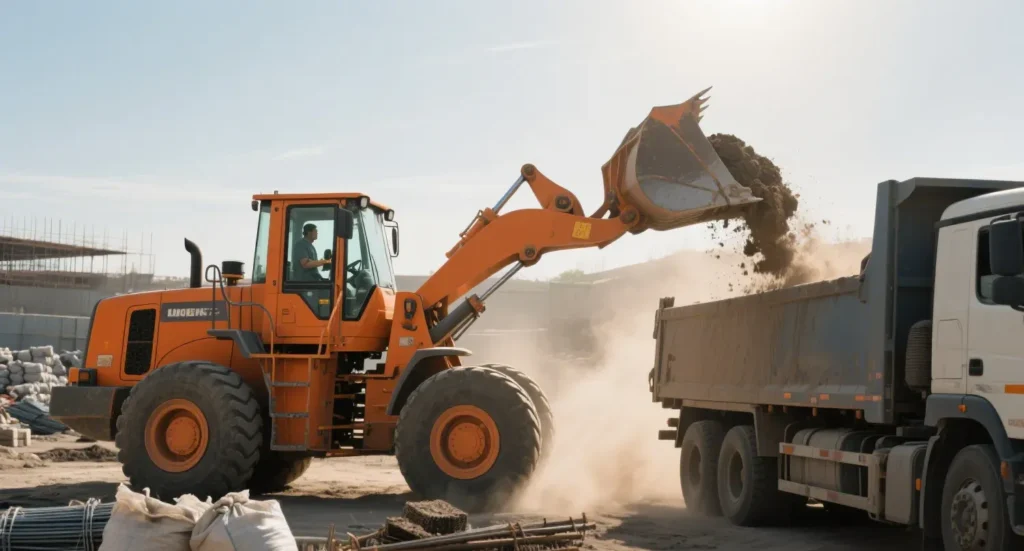
🔥 Side-by-Side: How They Stack Up
| الميزة | Skid Steer | Compact Track Loader | Compact Wheel Loader |
|---|---|---|---|
| Best Surface | Pavement, hard ground ✅ | Mud/snow/sand ✅ | Firm ground, long runs ✅ |
| Top Speed | 0–10 km/h (jogging pace) | 0–10 km/h | 12–18 km/h (biking speed) |
| Ground Pressure | High (20–30 PSI) 🚫 Turf | Low (3–5 PSI) 🌱 Safe | Medium |
| Lift Capacity | 200–500 kg | 200–500 kg | 750+ kg 💪 |
| Attachments | 40+ types (quick-change) | Same as skid steer | 30+ types |
| Comfort | Bumpy ride | Smoother than skid steer | Smoothest ride |
| Maintenance | Tire replacements | Track tension + replacement | Tire wear |
🏆 Which Machine Solves Your Problems?
Choose a Skid Steer When…
- Your site is cramped (city construction, barns, tight backyards).
- You need budget-friendly muscle for light to medium tasks.
- Most work is on pavement, concrete, or dry soil.
Real-World Wins:
- Scraping ice from parking lots
- Moving pallets in crowded factories
- Digging post holes with an auger
Pick a CTL When…
- Your ground is soft, wet, or unstable (farms after rain, beaches, snow).
- You demand zero ground damage (landscaping, sports fields, gardens).
- Slopes or uneven terrain are daily challenges.
Real-World Wins:
- Clearing snow from steep driveways
- Mulching overgrown lots without tearing soil
- Working in marshland or muddy pastures
Go Compact Wheel Loader When…
- You haul materials across large properties (farms, airports, big builds).
- You lift heavy loads (gravel, rock, logs) often.
- Operator comfort is non-negotiable (long shifts, rough terrain).
Real-World Wins:
- Loading trucks with gravel or soil
- Transporting feed across mile-long farms
- Site cleanup on sprawling projects
💡 Pro Tip: Rent for a day! Test a CTL in mud or a wheel loader on your longest haul. Your back—and wallet—will thank you.
❓ Tracks vs. Tires: The Nitty-Gritty
This isn’t just about wheels or tracks—it’s about how they interact with your ground.
- Tires:
- 👍 Cheaper upfront. Better grip on pavement.
- 👎 Sink in mud/snow. Wear faster on rocks or debris.
- Tracks:
- 👍 Float over swamps and sand. Distribute weight evenly.
- 👎 Cost more to buy and replace ($1,500–$4,000/set). Need monthly tension checks.
“Tracks spread weight like snowshoes. Less sinking equals more productivity.” — Equipment Manager, Midwest Landscaping
💰 Costs: The Full Picture
Don’t just look at the sticker price. Consider:
- Skid Steers:
- ✅ Lowest upfront cost
- ❌ Tires wear fast on abrasive surfaces (gravel, concrete)
- CTLs:
- ✅ King of soft ground—saves costly turf repairs
- ❌ Tracks cost more to maintain and replace
- Wheel Loaders:
- ✅ Saves fuel over time. Tires last longer thanks to pivot steering.
- ❌ Higher initial investment
⚠️ Hidden Factor: Attachments! A bucket, auger, or snow blower works on ALL loader types. Buy once, use everywhere.
🏁 The Final Verdict
There’s no “best” machine—only the best for your dirt.
- Skid steer: Your agile, affordable sidekick for tight spaces.
- CTL: The unstoppable conqueror of messy terrain.
- Wheel loader: The speed and strength solution for heavy, long-haul work.
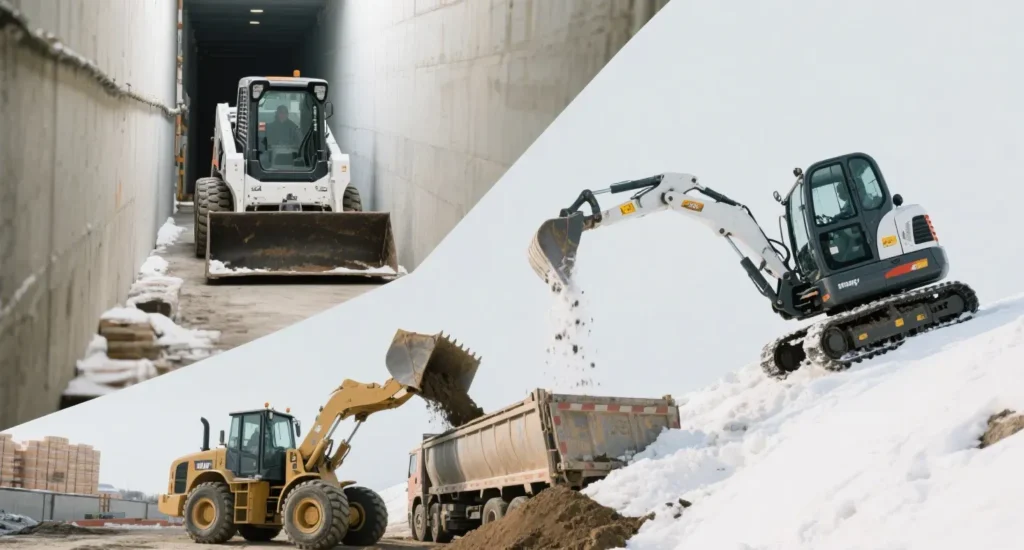
Still stuck? Match your most frequent task to the machine:
- Loading pallets in a cramped yard? → Skid steer
- Hauling mulch across 10 acres? → Wheel loader
- Clearing a snow-buried jobsite? → CTL
✅ Your Next Move:
- List your top 3 jobs.
- Note your terrain (mud? pavement? slopes?).
- Visit a dealer. Test drive each loader.Feel their grip. Test their turn. Lift a load. Your perfect match is waiting.

